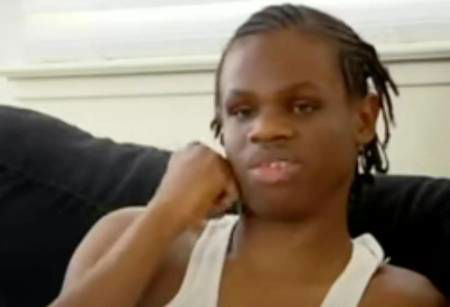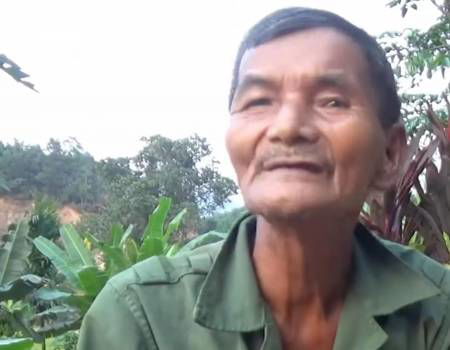These individuals have left researchers astonished with abilities that break the usual rules of human biology, pushing experts to search for clear scientific explanations.
When most people hear the word “superpower,” thoughts jump to flying, immortality, or shooting lasers from one’s eyes. Yet today, there are real individuals who seem to display abilities that feel just as extraordinary in everyday life.
Move aside, Superman and Iron Man. A surprising group of ordinary-looking people has captured global attention for feats that sound like something out of a comic book.
Each of these seven individuals possesses a unique skill so unusual and so consistently demonstrated that it can genuinely leave you speechless.
Their abilities sit far outside the bounds of what’s considered normal, and scientists still can’t fully explain how they work. There is rarely one simple answer. Genetics may contribute. Years of dedicated practice might play a role. Sometimes, it might come down to rare biological luck — or a combination of all three.
What is clear is that their talents resemble something you’d expect on a movie screen, not in a neighborhood or on a city sidewalk.
Wim Hof
Wim Hof — widely known as “The Iceman” — can withstand extreme cold for durations that would send most people scrambling for warmth.
In 2000, the Dutch athlete set a Guinness World Record for the farthest swim under ice and claimed another record for the longest duration in full-body contact with ice.
That second achievement lasted an astonishing one hour, 53 minutes, and two seconds. While many people hesitate to turn on the cold tap, he sat encased in ice for nearly two hours. The current record is now held by Valerjan Romanovski, who endured three hours and 28 seconds.
Hof’s ability goes beyond mental toughness. At 66, he appears less prone to illness after long exposure to cold compared with most people. In 2011, Dr. Peter Pickkers reported that, through what he described as Hof’s meditation technique, certain inflammatory cells were reduced by about one-third to one-half compared with control subjects.
Natasha Demkina

Natasha Demkina’s talent is radically different.
The 38-year-old Russian claims she can see inside the human body and detect issues in organs or tissue — almost like a living X-ray machine.
That ability earned her the nickname “the girl with X-ray eyes,” taking her from TV studios to scientific evaluations.
During a 2004 appearance on the UK show This Morning, she identified the source of a painful ankle. That same year, researchers tested her, concluding she matched four out of seven medical diagnoses. The result sparked debate — some experts argued that four correct guesses could be attributed to chance, casting doubt over whether her ability is real or simply coincidental.
Concerns grew when she misidentified supposed conditions for This Morning’s Chris Steele, including issues linked to the kidneys, pancreas, and stomach, adding more skepticism.
Daniel Browning Smith
Daniel Browning Smith, often called “the most flexible man on the planet” or “Rubberboy,” has earned those titles.
The 46-year-old American contortionist holds seven Guinness World Records thanks to his extraordinary flexibility and physical control.
Doctors do have an explanation for his abilities. He has hypermobile Ehlers-Danlos syndrome, a genetic connective tissue disorder that increases joint mobility. While it helps him achieve his extreme contortions, the condition can also lead to chronic pain, fragile skin, and internal complications for many who have it.
Stephen Wiltshire
British architectural artist Stephen Wiltshire, 51, is renowned for his extraordinary photographic memory, especially when capturing buildings and cityscapes.
He can glance at a skyline once and later draw it from memory with breathtaking accuracy, down to tiny architectural details.
Diagnosed with autism at age three, Wiltshire is often described as a savant — someone who is neurodivergent or disabled yet possesses an extraordinary ability in a specific area.
Ben Underwood

Ben Underwood, who lost both eyes to retinoblastoma as a child, developed an extraordinary talent: human echolocation.
By clicking his tongue and listening to the returning echoes, he claimed he could “see” his surroundings much like a dolphin. While human echolocation is possible with practice, Underwood was considered exceptionally skilled, navigating spaces and identifying objects with surprising precision.
Tragically, he passed away at just 16 in 2009 when his cancer returned, but his story continues to inspire others learning echolocation today.
Thai Ngoc

Vietnamese farmer Thai Ngoc claims he has not slept at all since 1973 — more than five decades without rest.
Now believed to be in his 80s, he has said he mostly feels slightly “grumpy,” according to Giao Duc Thoi Dai, despite supposedly going decades without sleep.
While some sleep disorders can be fatal, Ngoc insists he has been fully functional for years without dozing off. However, his case has never been rigorously studied, and experts note it’s unclear whether very short, unnoticed bursts of rest may still occur.
Prahlad Jani
Prahlad Jani — also known as Mataji or Chunriwala Majaji — was an Indian breatharian monk who died in 2020.
He claimed he could survive without food or water, saying he was sustained by the Hindu goddess Amba — a claim that drew global attention and scientific curiosity.
Two monitored tests were carried out: one in 2003 for 10 days and another in 2010 for 15 days. Observers said he did not eat, drink, or use the bathroom during these periods.
Even so, many medical experts remained skeptical, pointing out that short-term observation is far from proving long-term survival without food or water, and calling for more rigorous study.
